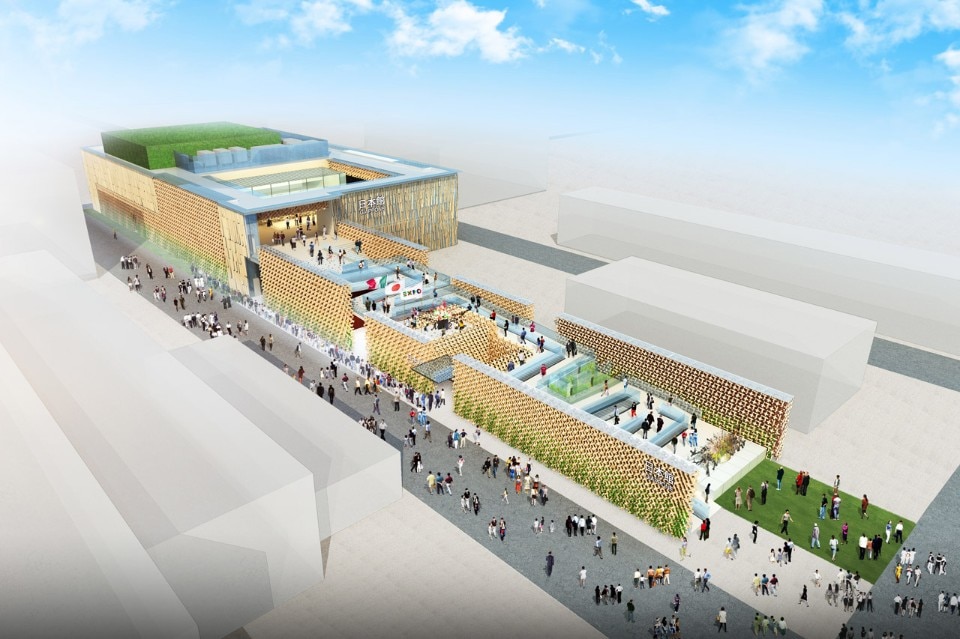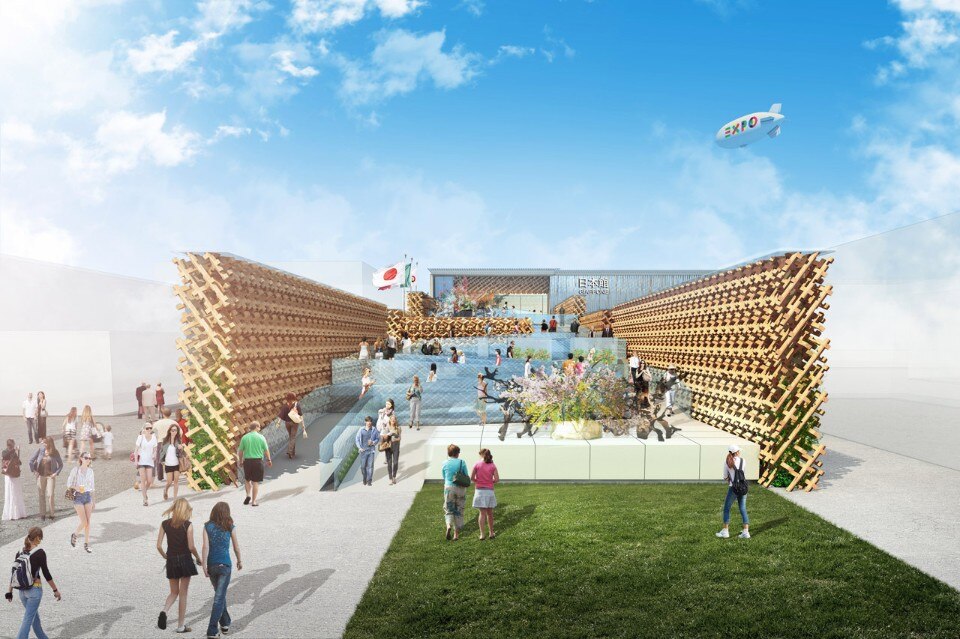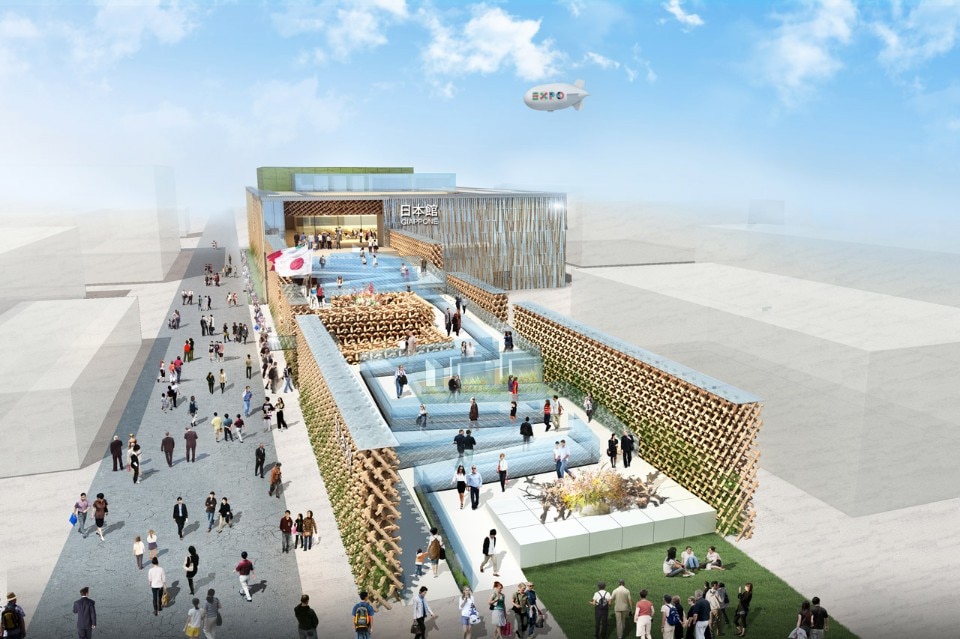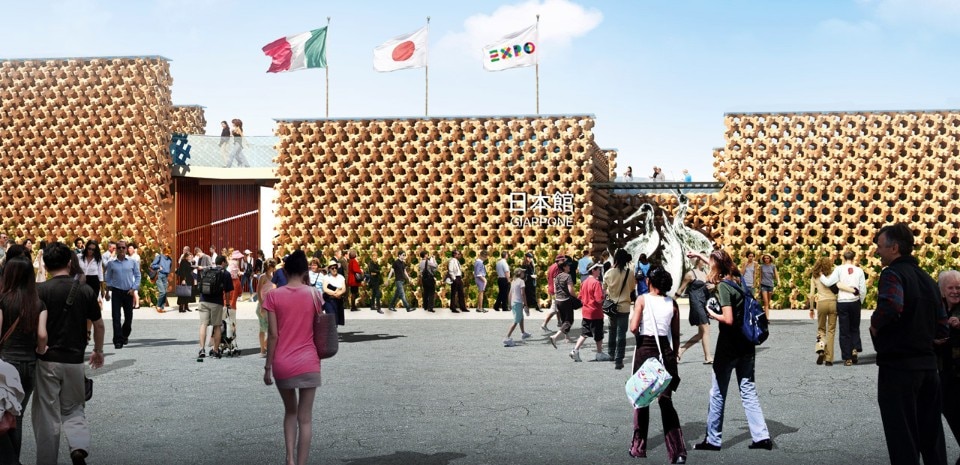
The use of the renewable resource of wood for the pavilion connects it to issues of forest maintenance and protection. Forests promote the creation of water rich in nutrients, which is then returned to the land and the seas, stimulating the creation of the diverse food that people eat.
The use of trees and lifestyles of people have been closely connected within satoyama (natural woodlands that coexist with a nearby populated area) in Japan since ancient times. Within these communities, Japan has fostered ideal recycling-oriented societies. The Japan Pavilion will adopt a three-dimensional wooden grid as construction materials that embody sustainability, one of the keywords of Expo 2015 Milano.
The three-dimensional wooden grid will symbolize the origin of Japan’s diversity – the four seasons, nature, ecosystem and food. The Pavilion will take the shape of a “bowl of diversity”.

The traditional wooden construction techniques of Japan – epitomized in Horyuji Temple – use a compressive strain method in which joints consists only of carved wood, without metal couplers, for support. This results in constructions that are extremely resistant to earthquakes; a kind of building that has sometimes been called “living construction (or life theory construction).”
The pavilion, created from a three-dimensional wooden grid, will be the first ever to use both traditional construction knowledge about wooden frameworks and modern analysis and application of compressive strain. This will result in truly innovative construction that fuses Japan’s traditional culture and advanced technology.

Japanese pavilion, Harmonious Diversity, Expo Milano 2015
Architect: Atsushi Kitagawara
Organizer: Ministry of Agriculture, Forestry and Fisheries, Ministry of Economy, Trade and Industry
CO-organizer: Ministry of Land, Infrastructure, Transport and Tourism
Participant: Japan External Trade Organization (JETRO)
Area: 4,170 sqm


